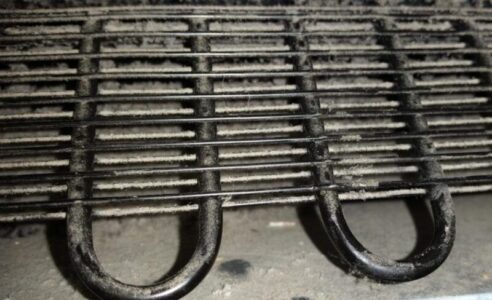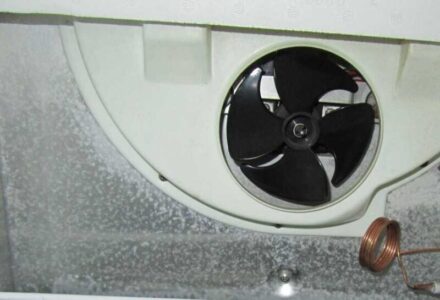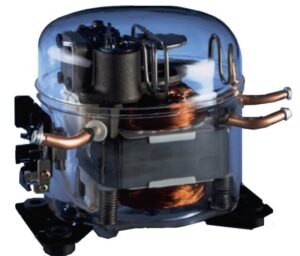Your brand-new fridge runs constantly? It can lead to various consequences. If left unfixed, the motor can overheat and deteriorate quickly. Depending on the brand and model, the lifespan of the refrigeration unit may be reduced to approximately six months in such cases. To prevent further issues, it is crucial to promptly address the malfunction and restore the refrigerator to its optimal operating mode. By taking immediate action, you can avoid potential problems and ensure the longevity of your appliance.
Why Your Refrigerator Keeps Running
Have you ever wondered why your refrigerator runs all the time? Should you hear your fridge running all the time? It can be concerning to hear it humming away consistently, but don’t worry. In this guide, we will explore the causes behind a constantly running refrigerator and provide practical solutions to address the issue. By understanding the potential culprits and implementing proper maintenance techniques, you can regain control over your appliance’s performance and ensure it operates efficiently. The most common reasons may be:
- Dirty Condenser Coils;
- Faulty Defrost Heater;
- Defective Defrost Thermostat;
- Faulty Condenser Fan Motor;
- Faulty Evaporator Fan Motor;
- Worn Door Gasket;
- Faulty Compressor.
Dirty Condenser Coils
If condenser coils are dirty, a refrigerator won’t stop running. These coils, which are typically located at the back or underneath the unit, play a crucial role in the cooling process. However, over time, they can become clogged with dust, dirt, and debris, which hampers their ability to release heat efficiently. Consequently, the refrigerator keeps running to maintain the desired temperature, resulting in continuous operation.

Fortunately, resolving this issue is relatively straightforward. Begin by unplugging the refrigerator and locating the condenser coils. Depending on the model, you may find them at the back or underneath the unit. To clean the coils, use a vacuum cleaner with a brush attachment. Carefully remove the accumulated dirt and debris from the coils, taking care not to damage the delicate fins during the process. Once you have thoroughly cleaned the coils, plug the refrigerator back in and observe whether the constant running problem persists.
Eliminating condensation can significantly improve your refrigerator’s efficiency and reduce its continuous operation. By ensuring proper heat dissipation, you can alleviate the strain on the appliance and promote more efficient cooling. If, however, the issue persists after cleaning the coils, it may be necessary to explore other potential causes and solutions.
Faulty Defrost Heater
A faulty defrost heater can be another reason of a refrigerator running all the time. The defrost heater plays a crucial role in melting any frost or ice that accumulates on the evaporator coils during the cooling process. However, if the heater malfunctions and fails to defrost the coils properly, ice buildup can occur, obstructing airflow and causing the refrigerator to run continuously. If you suspect that your defrost heater is faulty, it is important to address the issue promptly. Start by consulting your refrigerator’s manual for guidance or consider reaching out to a professional technician for assistance. They have the expertise to identify the correct replacement part and can guide you through the installation process.
Replacing a faulty defrost heater can help restore proper functionality to your refrigerator. By ensuring that the coils are effectively defrosted, you can prevent ice buildup and restore proper airflow within the unit. This, in turn, can alleviate the constant running issue and promote more efficient cooling. Remember to follow proper safety procedures and seek professional assistance if needed when dealing with electrical components.
Defective Defrost Thermostat

A defective defrost thermostat can be the reason why your refrigerator runs constantly. The role of the defrost thermostat is to monitor the temperature of the evaporator coils. When these coils reach a certain temperature, the thermostat signals the defrost heater to activate and melt any frost or ice that has accumulated in freezer, creating moisture. However, if the thermostat is faulty and fails to accurately detect the temperature, it can prevent the heater from engaging when necessary, leading to continuous operation of the refrigerator. To address this issue, it is recommended to replace the defective defrost thermostat. Consult your refrigerator’s manual or consider seeking professional assistance to ensure you select the correct thermostat for your specific refrigerator model. They will be able to guide you in identifying the appropriate replacement part and provide assistance with the installation process.
By replacing the faulty defrost thermostat, you can restore the proper functioning of the temperature monitoring system. This will ensure that the heater activates at the right time, effectively melting any frost or ice on the evaporator coils. As a result, the refrigerator will no longer run continuously, and its cooling performance will improve. Always follow safety guidelines and consider professional help when working with electrical components.
Faulty Condenser Fan Motor
The condenser fan motor is an essential component responsible for dissipating heat from the condenser coils. When the fan motor becomes faulty or stops working altogether, heat removal becomes inefficient, leading to the refrigerator running constantly as it tries to compensate for the lack of proper cooling. To restore the normal operation cycle of the refrigerator, it is necessary to replace the faulty condenser fan motor. Consult your refrigerator’s manual or consider seeking the assistance of a professional technician to ensure the correct replacement part is selected and installed properly.
By replacing the faulty condenser fan motor, you can restore the efficient heat dissipation process. The new motor will effectively remove heat from the condenser coils, allowing the refrigerator to operate more efficiently and reducing the need for continuous operation. Improved cooling performance will help maintain the desired temperature inside the fridge, resulting in energy savings and a longer lifespan for the appliance. Always exercise caution when working with electrical components and consider professional help for installation to ensure safety and proper functionality.
Faulty Evaporator Fan Motor

The evaporator fan motor plays a crucial role in circulating cold air throughout the refrigerator, ensuring uniform cooling. When this fan motor malfunctions, it can disrupt the proper airflow, leading to an imbalance in temperature and causing the refrigerator running continuously as it tries to compensate for the inadequate cooling.
To address this issue, it is necessary to replace the faulty evaporator fan motor. Consult your refrigerator’s manual for guidance or consider seeking the assistance of a professional technician to ensure the correct replacement part is obtained and installed correctly. By replacing the faulty evaporator fan motor, you can restore proper airflow and ensure that cold air is evenly distributed within the refrigerator. This will help the appliance maintain the desired temperature more effectively, reducing the need for constant operation and improving energy efficiency. Always prioritize safety when working with electrical components and consider seeking professional help for installation to ensure proper functionality and avoid any potential risks.
Worn Door Gasket
The door gasket, or door seal, is an essential component of the refrigerator that forms a tight seal when the door is closed. Over time, the gasket can become worn, damaged, or dirty, compromising its ability to maintain an airtight seal. This can result in cold air escaping from the refrigerator and warm air seeping in. As a result fridge won’t stop running as it tries to maintain the desired temperature. To address this issue, it’s important to inspect the door gasket regularly for any signs of wear, tears, or accumulation of debris. If you notice any damage or dirt buildup, clean the gasket using mild soapy water and a soft cloth. Make sure the gasket is properly aligned and firmly sealing the door.
In cases where the gasket is severely damaged and cleaning doesn’t resolve the issue, it may be necessary to replace the door gasket. Consult your refrigerator’s manual or seek the assistance of a professional technician to ensure you obtain the correct replacement gasket for your specific model. By maintaining a well-functioning door gasket, you can ensure that the refrigerator remains properly sealed, preventing air leakage and reducing the need for constant running. This not only helps preserve the freshness of your food but also contributes to energy efficiency and lower utility bills. Always prioritize safety and follow manufacturer guidelines when cleaning or replacing the door gasket.
Faulty Compressor

The compressor is the central component of the refrigerator’s cooling system, responsible for circulating refrigerant and facilitating the heat exchange process. If th
e compressor malfunctions or encounters problems, it can result in the refrigerator keeps running in an attempt to maintain the desired temperature. Repairing a faulty compressor is a complex task that should be handled by a qualified professional. If you suspect any issues with this element, it’s crucial to reach out to a knowledgeable technician who can diagnose and resolve the problem effectively.
When dealing with compressor-related problems, it’s important to avoid attempting repairs yourself, as it can be hazardous and may further damage the appliance. A qualified technician will have the necessary expertise, tools, and replacement parts to properly diagnose and fix any related issues. By entrusting the repair to a professional, you can ensure the safety of both yourself and the appliance, as well as avoid potential costly mistakes. These experts are trained to handle compressor repairs and will provide you with the most appropriate solution based on the specific problem your refrigerator is experiencing. Remember, a faulty compressor is not something that can be fixed through simple troubleshooting or DIY methods. Seek the assistance of a qualified technician to ensure a proper diagnosis and repair, helping to restore your refrigerator’s optimal performance and eliminate the constant running issue.
How to Stop a Refrigerator from Running Constantly
Now that we’ve delved into the reasons why your refrigerator runs constantly, it’s time to focus on actionable solutions that can effectively address this issue. By implementing these practical recommendations, you’ll be able to restore your refrigerator’s optimal performance and enhance its energy efficiency.
-
Start by unplugging your refrigerator and locating the condenser coils, typically found at the back or underneath the unit. Use a vacuum cleaner with a brush attachment to gently remove any dust, dirt, or debris that has accumulated on the coils. This simple maintenance task can improve the cooling efficiency and prevent the refrigerator from running continuously.
-
Inspect the door gasket for any signs of wear, tears, or debris buildup. If you notice any issues, clean the gasket with mild soapy water and ensure it is properly aligned and sealing tightly. A worn or damaged door gasket can cause cold air to escape and warm air to enter, leading to increased running time.
-
Both the evaporator and condenser fan motors play vital roles in ensuring proper airflow within the refrigerator. Regularly check these motors for any malfunctions or obstructions and replace them if necessary. Proper airflow is essential for maintaining the desired temperature and preventing continuous operation.
-
If you’ve identified specific components like the defrost heater, defrost thermostat, compressor, or any other essential part as the cause of the constant running, it’s crucial to replace them promptly. Consult your refrigerator’s manual or seek professional assistance to ensure you select the correct replacement parts for your specific model.
-
Check and adjust the temperature settings of your refrigerator to ensure they are within the recommended range. Extremely low or high temperatures can cause the refrigerator to run excessively. Refer to your refrigerator’s manual for the optimal temperature settings.
By implementing these maintenance and troubleshooting steps, you can effectively address the issue of a constantly running refrigerator and promote its efficient operation. Remember, if you encounter complex issues or are unsure about performing any repairs, it’s always best to seek professional help to avoid further complications.
By taking these practical measures, you’ll not only restore your refrigerator’s optimal performance but also contribute to energy savings and a more sustainable home. Enjoy the benefits of a well-functioning refrigerator while minimizing energy consumption and utility costs.
Maintenance Recommendations to Prevent a Constantly Running Fridge
Prevention is key when it comes to maintaining the optimal performance of your refrigerator and avoiding the inconvenience of a constantly running fridge. By implementing these maintenance recommendations, you can prevent issues that may lead to continuous operation and ensure the longevity of your appliance.
-
Keep both the interior and exterior of your refrigerator clean. Wipe down surfaces with a mild detergent and clean up any spills or messes promptly. Regularly remove expired or spoiled food to prevent odors and maintain a fresh environment.
-
Set the temperature of your refrigerator to the recommended level specified by the manufacturer. Avoid setting it too low or too high, as extreme temperatures can cause the refrigerator to run more than necessary.
-
Organize your food items strategically to allow for proper airflow. Avoid overpacking the refrigerator, as overcrowding can hinder air circulation. Leave space between items to ensure cold air can freely circulate and maintain consistent temperatures.
-
Minimize the frequency and duration of door openings. Each time the refrigerator door is opened, cold air escapes, and warm air enters. Reduce unnecessary door openings and be mindful of leaving the door open for extended periods.
-
As discussed earlier in this guide, regularly clean the condenser coils to prevent dirt and debris buildup. Follow the instructions provided by the manufacturer to safely clean the coils and maintain optimal heat dissipation.
-
If you notice any unusual sounds, leaks, or performance issues with your refrigerator, address them promptly. Ignoring these signs can lead to more significant problems and potentially increase the running time of the appliance. Contact a professional technician for timely repairs.
-
Consider scheduling periodic maintenance checks with a qualified technician. They can inspect your refrigerator, identify any underlying issues, and perform necessary adjustments or repairs to stop your refrigerator running overtime.
By following these maintenance recommendations, you can prevent common problems that may cause your refrigerator to run constantly. Not only will this ensure optimal performance and energy efficiency, but it will also extend the lifespan of your appliance. Take proactive steps to maintain your refrigerator, and enjoy reliable cooling for years to come.
If a refrigerator runs constantly, it can be frustrating, but armed with the knowledge gained from this guide you’re now prepared to tackle the issue head-on. By following the practical solutions outlined here, you can identify potential causes and implement the necessary fixes to restore your appliance’s optimal performance. Let’s recap the key steps to take:
- Regularly clean the condenser coils to remove dirt and debris, ensuring efficient heat dissipation;
- Replace faulty components like the defrost heater, defrost thermostat, fan motors, and door gasket to maintain proper functioning;
- Seek professional assistance for more complex issues, such as compressor problems, to ensure accurate diagnosis and effective repair.
By adhering to proper maintenance practices and staying attentive to your refrigerator’s performance, you can enjoy an efficiently running appliance that keeps your food fresh while minimizing energy consumption.
With a solid understanding of your refrigerator’s inner workings and the implementation of these practical solutions, you can bid farewell to the days of a constantly running fridge. Say hello to a well-behaved, energy-efficient appliance that serves you reliably for years to come.
Remember, if you encounter complex issues or lack the technical knowledge, don’t hesitate to seek professional help. A qualified technician can diagnose and fix problems that may be beyond your expertise, ensuring your refrigerator is in top-notch condition.